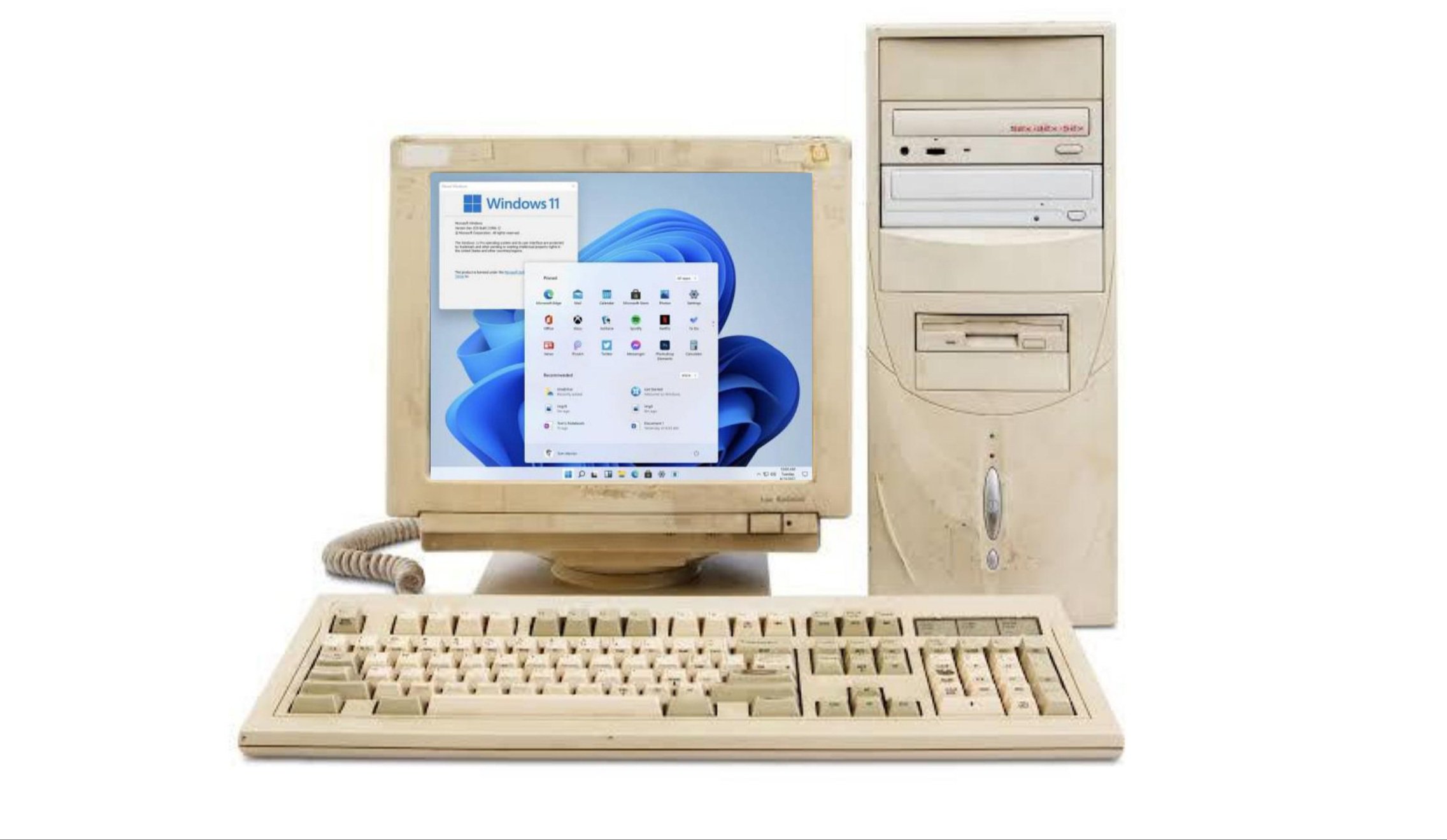EDIT: Just to clarify, this applies to a clean install only.
For anyone looking for another way to install on unsupported hardware (must still have a CPU capable of supporting SSE4.2 instructions), here is another simple way to do this:
Grab the text from the code box below and drop into notepad, notepad++, etc. DO NOT use a program such as Word that adds formatting characters.
Save the file as autounattend.xml. It MUST be autounattend.xml, no other file name will work. Make sure you do not accidentally save it with a .txt file extension.
Drop that file onto the root of your Windows installation media. If your media has 2 partitions, drop it onto partition 1.
That is literally all you need to do.
What this file does
This file bypasses the Windows system requirements and creates a local account. It does NOT perform an unattended installation of Windows. It will work whether or not you are connected to the Internet, so you do not have to worry about unplugging Ethernet or anything like that.
Customization
This file assumes that you want to install the Pro edition and creates a user named "WinUser" with the full name "Windows User" and a default password of "Password1".
If you read the top lines, you will see instructions for changing the username and changing the edition to Home rather than Pro.
XML:
<?xml version="1.0" encoding="utf-8"?>
<!--
Last updated on Oct 2, 2024
The purpose of this answer file is to bypass the Windows 11 system requirement checks, create a local user account, and
eliminate the need for an internet connection during setup. It does NOT perform an unattended installation of Windows.
It includes a Windows 10 / 11 Pro key.
If you want to install Windows Home edition instead, please change the key below to YTMG3-N6DKC-DKB77-7M9GH-8HVX7.
It will create a local user account named "WinUser" with a full name of "Windows User" and a password of "Password1".
You can change the user name as you see fit. Please do not alter the password since this is a hashed password. You can
chamge the password after installation or get in touch with me for instructions on changing this in the answer file if you
prefer.
END OF NOTES
-->
<unattend xmlns="urn:schemas-microsoft-com:unattend">
<settings pass="windowsPE">
<component name="Microsoft-Windows-Setup" processorArchitecture="amd64" publicKeyToken="31bf3856ad364e35" language="neutral" versionScope="nonSxS" xmlns:wcm="http://schemas.microsoft.com/WMIConfig/2002/State" xmlns:xsi="http://www.w3.org/2001/XMLSchema-instance">
<UserData>
<ProductKey>
<Key>VK7JG-NPHTM-C97JM-9MPGT-3V66T</Key>
</ProductKey>
<AcceptEula>true</AcceptEula>
</UserData>
<RunSynchronous>
<RunSynchronousCommand wcm:action="add">
<Order>1</Order>
<Path>reg add HKLM\System\Setup\LabConfig /v BypassTPMCheck /t reg_dword /d 0x00000001 /f</Path>
</RunSynchronousCommand>
<RunSynchronousCommand wcm:action="add">
<Order>2</Order>
<Path>reg add HKLM\System\Setup\LabConfig /v BypassSecureBootCheck /t reg_dword /d 0x00000001 /f</Path>
</RunSynchronousCommand>
<RunSynchronousCommand wcm:action="add">
<Order>3</Order>
<Path>reg add HKLM\System\Setup\LabConfig /v BypassRAMCheck /t reg_dword /d 0x00000001 /f</Path>
</RunSynchronousCommand>
</RunSynchronous>
</component>
</settings>
<settings pass="oobeSystem">
<component name="Microsoft-Windows-Shell-Setup" processorArchitecture="amd64" publicKeyToken="31bf3856ad364e35" language="neutral" versionScope="nonSxS" xmlns:wcm="http://schemas.microsoft.com/WMIConfig/2002/State" xmlns:xsi="http://www.w3.org/2001/XMLSchema-instance">
<UserAccounts>
<LocalAccounts>
<LocalAccount wcm:action="add">
<Password>
<Value>UABhAHMAcwB3AG8AcgBkADEAUABhAHMAcwB3AG8AcgBkAA==</Value>
<PlainText>false</PlainText>
</Password>
<DisplayName>Windows User</DisplayName>
<Group>Administrators</Group>
<Name>WinUser</Name>
</LocalAccount>
</LocalAccounts>
</UserAccounts>
<OOBE>
<HideWirelessSetupInOOBE>true</HideWirelessSetupInOOBE>
<UnattendEnableRetailDemo>false</UnattendEnableRetailDemo>
<HideEULAPage>true</HideEULAPage>
<HideOEMRegistrationScreen>true</HideOEMRegistrationScreen>
<HideOnlineAccountScreens>true</HideOnlineAccountScreens>
<ProtectYourPC>1</ProtectYourPC>
</OOBE>
</component>
</settings>
</unattend>







